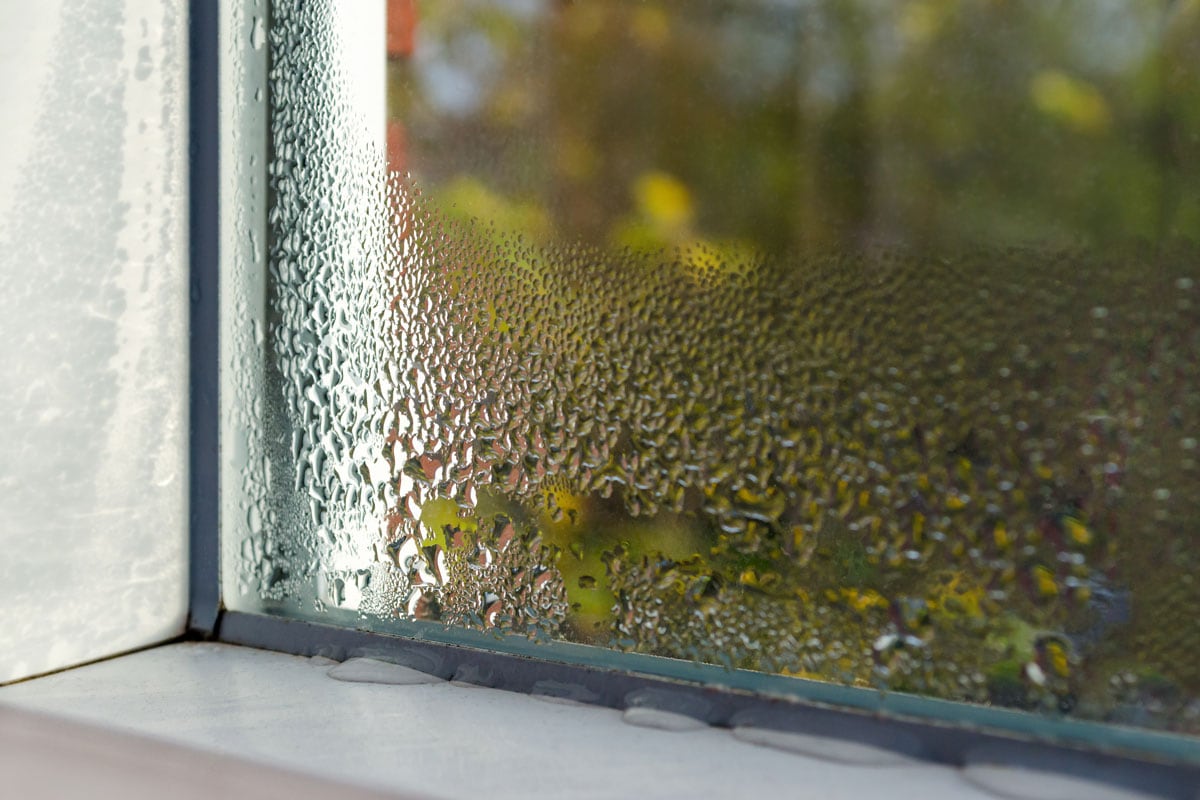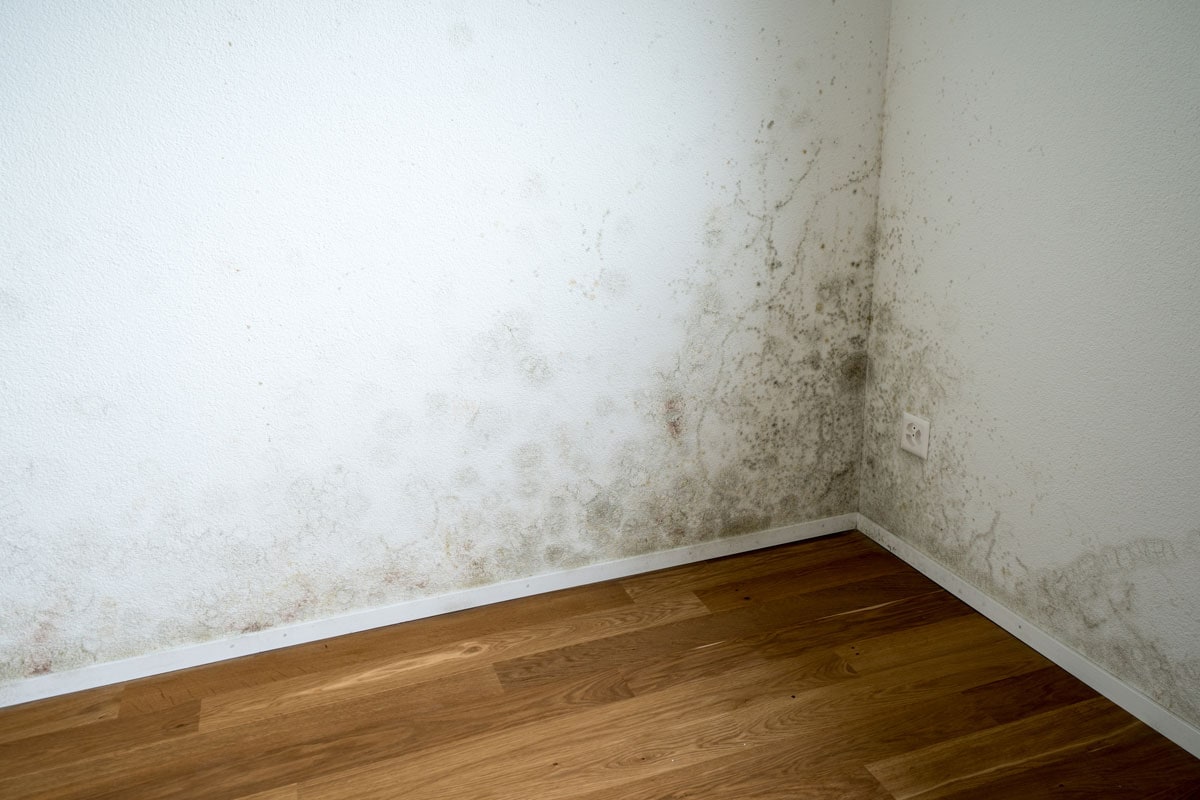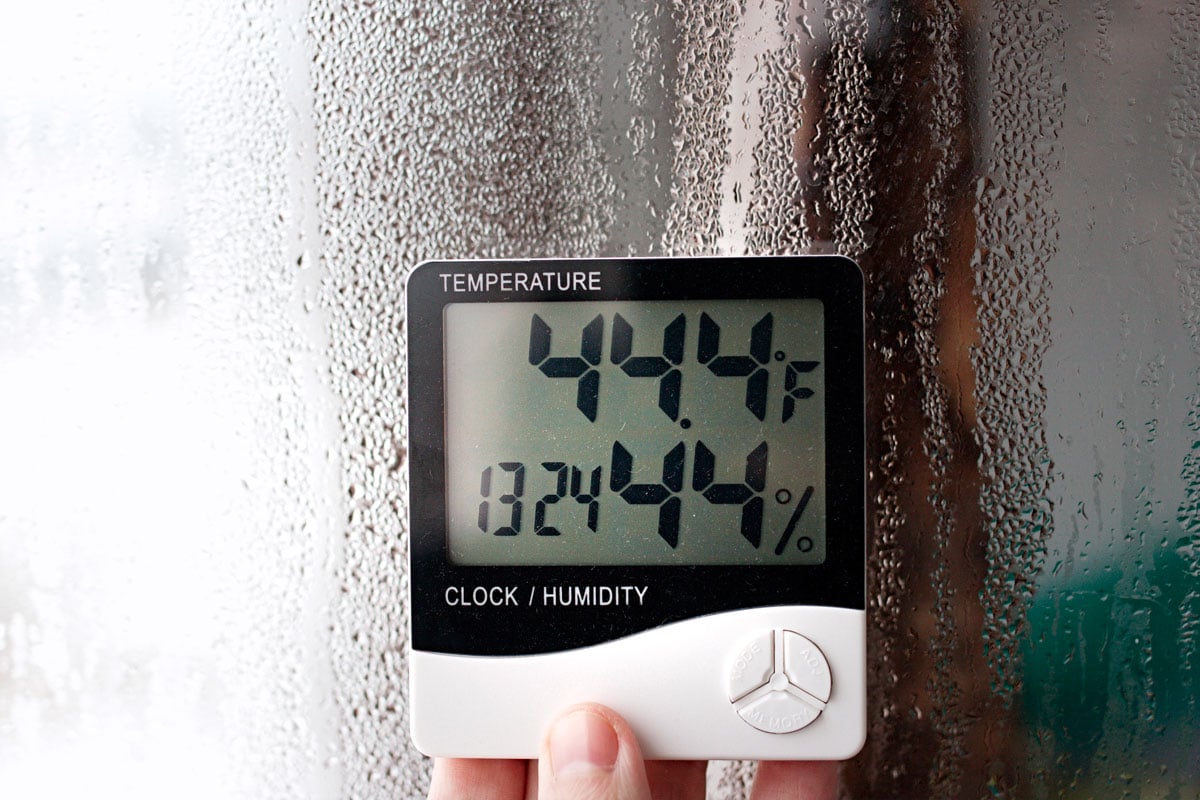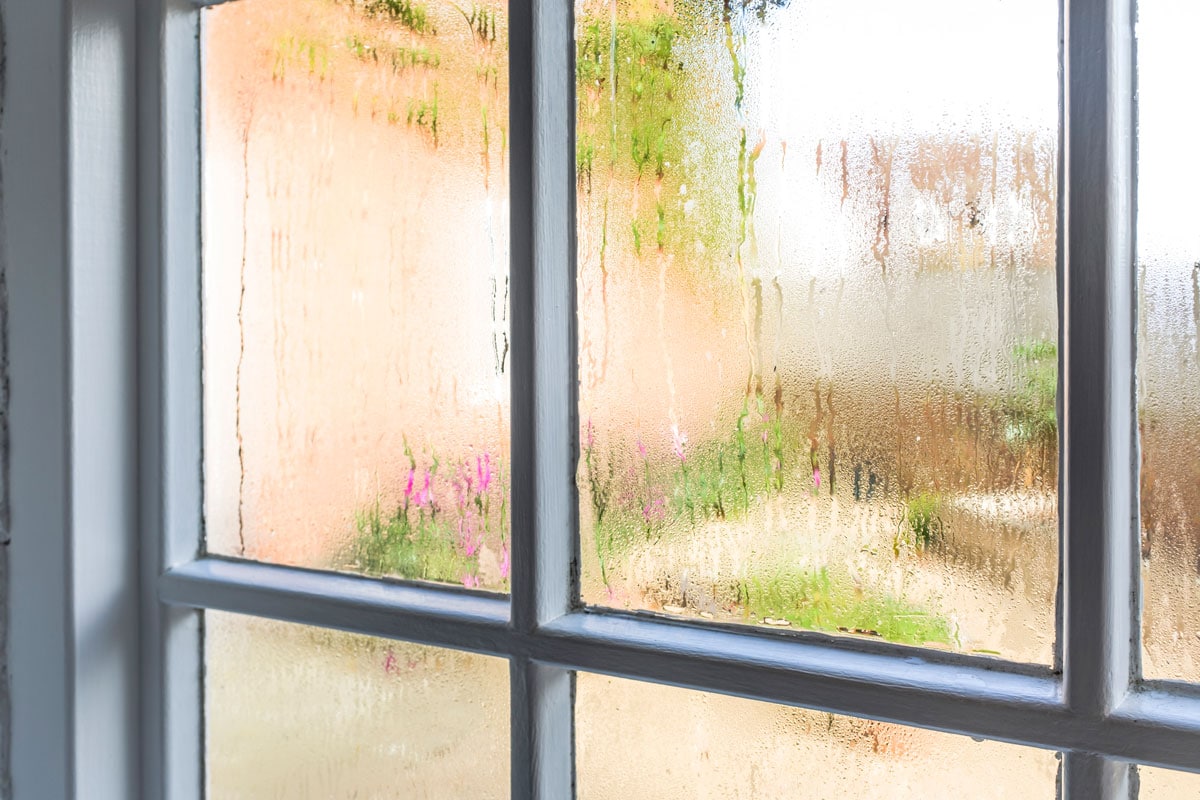Humidity is not generally considered an important factor in daily life. It, however, contributes considerably to the quality of living. We hope our research will help you to learn what the ideal humidity level should be, why you have to maintain said level, and how to facilitate the condition.
The ideal humidity inside every home is between 31 to 45%. If it dips down to 30%, the air is too dry, and if it goes above 50%, the humidity level is too high. Excessive and inefficient moisture levels are serious health risks. It is best to monitor and keep the humid air inside your home as sufficient as possible.
It is important to keep track of the humidity levels inside your home to keep you cozy and comfortable, especially during the winter and summer seasons. Maintaining the average humidity level would not expose you and your family to illnesses. We are here to guide and help you achieve the ideal level.

What Is Humidity?
Humidity is the concentration of water vapor in the air. Hot or warm air can contain more vapor, whereas cold temperatures have the opposite effect. High humidity is associated with hot weather and vice versa.

Humid vs. Dry Air
The most significant difference between humid and dry air is in the level of water vapor in the surroundings. Dry or thin air has a low level of vapor, and the opposite applies to humid air.
In as much as average weather has no significant effect on humidity, extreme temperatures tend to affect changes in general living conditions.
What is The Ideal Indoor Humidity Level?
Appropriate indoor humidity levels vary depending on the season. Drastic weather changes affect moisture in the area. During the intense summer heat, the ideal air moisture is between 40% to 50% while in the winter months, the most suitable atmospheric humidity is from 30% to 40%.
If the percentage goes out of the humidity range, it could lead to adverse effects on both people and the environment.
Why Should We Maintain the Ideal Humidity Level Indoors?
Moisture level within the optimal range creates a comfortable living environment. However, high and low humidity levels have adverse effects on our health, appliances or gadgets, walls, and wardrobes.
Excess and insufficient moisture can damage your devices. Too much moisture can corrode the metal parts of gadgets and appliances rendering them damaged or simply inoperable.

High humidity will also cause mold and mildew buildup on your walls and clothing. The paint finishing may chip off, especially if newly applied.
Dangers of High Humidity
Too much heat is dangerous, but when it is combined with high humidity, your body has a more difficult time cooling itself off. It will result in feelings of low energy and weariness.
Heat Stroke
Heatstroke is the most common life-threatening illness associated with damp or wet air. If you or anyone you know experiences headaches, confusion, or vomiting, seek medical treatment immediately. Hydrate yourself and take some time to cool off.
Difficulty in Breathing and Stuffy Nose
Spending time in an area that has too much humidity will actually make you sick because viruses and bacteria thrive in humid conditions. It causes respiratory infections resulting in allergies, chest or nasal congestion, fatigue, and itchy eyes.
Drink plenty of fluids and get some rest. If you have a dehumidifier, turn it on to loosen up the mucus in your lungs. Nonetheless, it is still best to go to the doctor.
Heat Exhaustion
Heat exhaustion comes in several forms. You may experience excessive thirst, weakness, headache, fatigue, and nausea. If you feel any of these symptoms, try to make yourself as cool and cozy as possible.
Drink plenty of water, remove tight or unnecessary clothing, and take a cool shower or bath. If these simple ways did not work, consult the doctor at once.
Dangers of Low Humidity
The cold months come with a string of diseases such as colds, coughs, allergies, and skin infections.
Skin Problems
Low humid air can make your skin dry, flaky, and itchy making it susceptible to cracks. Any openings on the skin cause bacteria to thrive, which then leads to skin infections. One thing you can do is to take a warm bath and apply lotion on dry skin areas.
Respiratory Tract Problems
Dry air allows bacteria and viruses to survive longer. This is the reason why most people catch the common flu or colds.
Because of low humidity, the dry air will irritate the sinuses and the throat. Make sure to wear a scarf over your nose and mouth to stop the cold air from going into your lungs and tightening the airways.
Eye Problems
Moisture imbalance in the air makes your eyes vulnerable to microbial infections - the protective film of your eyes dries out. To help combat this problem, use artificial eye drops, and drink plenty of fluids and warm soup.
How To Maintain Optimum Humidity Level

If humidity is too low:
If the humidity is too low, install a humidifier directly on your cooling and heating units. This device adds moisture to the room.
Additionally:
- Boiling and cooking with the lids off is another way to increase humidity during the cold months.
- Keep the doors of your bathroom open when taking a shower so that moisture can spread throughout your home.
Humidifier
It is ideal to utilize a humidifier during the cold season. A humidifier is a device that adds moisture to the air to prevent dryness that causes irritation in various body parts.
This appliance is effective for reducing dryness of the nose, skin, lips, and throat, and it reduces and eases the symptoms caused by the common colds.
Levoit Classic 300S Ultrasonic Smart Humidifier
One feature of the Levoit humidifier is its smart features. You can easily adjust the settings through your mobile phone. It comes with a smart sensor that can detect humidity levels and prevents an increase in humid air in your home.
This device has an operating capacity of 60 hours at most. And because of its smartphone application, you will be able to schedule its working hours.
Check out Levoit 300S humidifier on Amazon.
If humidity is too high:
Cooling the air is the primary concern when the temperature is too humid.
- First, adjust your air conditioning system to the desired level. Install a dehumidifier, incorporated with your thermal regulating appliance.
- Ventilate areas like the bathroom, kitchen, and laundry room using exhaust fans.
- Cook with pans covered.
- Finally, take shorter baths.
These simple methods would reduce the humidity in your home.
Dehumidifier
A dehumidifier is best used during extreme heat because this appliance takes moisture out of the air. It basically reduces humidity levels inside your home which then improves your living condition.
Frigidaire FFAP5033W1
Presently, Frigidaire is the best dehumidifier on the market. It is equipped with an easy-to-clean washable filter and a continuous drain option which allows the device to drain fluid without the need for manual labor.
Custom Humidity Control is another feature of this appliance. You will be able to control the amount of humidity inside your home.
Check out Frigidaire dehumidifier on Amazon.
How To Gauge Indoor Humidity Levels

In order to control the humid air inside your home, you must first gauge the humidity levels. The following are simple ways to identify this issue:
The Ice Cube Method
The ice cube method basically identifies the presence or levels of humidity inside your home by checking if there is condensation forming around the ice cubes or not.
What you have to do is to fill the glass with water and then put the ice cubes. After four minutes, check if condensation is forming or dripping outside the glass. If yes, this indicates that humidity levels are high. On one hand, if there is no condensation, humidity levels are too low.
Fogging and Condensation
Fog and condensation build-up on your windows and moisture and mold appearing on the walls and ceilings are indications of high humidity levels.
Wet and Dry Bulb Temperature Test
These materials are used to make a homemade hygrometer. You will be needing two standard (dry bulb) thermometers, one wet thermometer, and a piece of cardboard.
For this to work, prepare the standard thermometer by shaking them well until all the mercury has moved into the bulbs. Afterward, wrap a moistened cotton ball around the third thermometer (remember to use room-temperature water).
After doing this, placed them on a piece of cardboard parallel to each other. Leave them for at least five to six minutes then check the temperatures on both devices. Next is subtract the wet-bulb temperature from the dry bulb to identify the depression value.
Once finished, compare the results to a relative humidity chart that can easily be found online.
Use a Hygrometer
The most accurate way to know the humidity level is by using a hygrometer. This is a device that measures the said levels inside a home by gauging the amount of water vapor that is present in the atmosphere.
In Closing

Maintaining the ideal humidity inside a home should always be given importance, especially during extreme seasons - summer and winter. Keep in mind the various ways to control the humidity levels to prevent any health issues.
If you have found this article helpful, check out these other informative topics:
Does Opening Windows Increase Humidity?
How To Get Fresh Air From Outside Without Letting Cold Air In?


